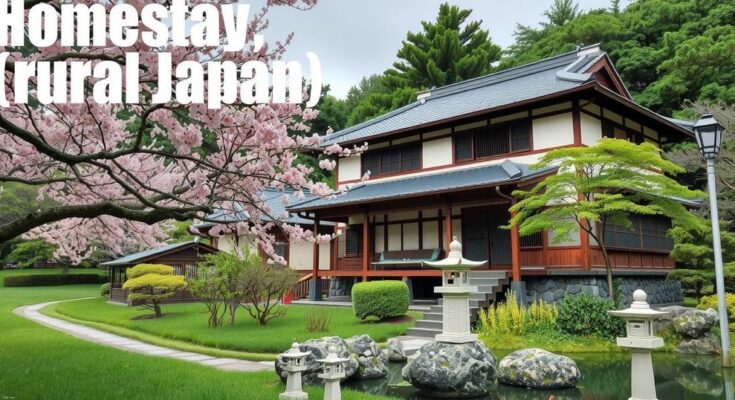In the bustling heart of Tokyo lies Shibuya Crossing, where fashionable youth dart through throngs of people and vibrant billboards blare advertisements. However, amidst this chaos, I longed for a taste of Japan beyond the neon lights. My journey took me to the serene town of Hagi, surrounded by lush mountains and rice fields, where the once-bustling streets now echo with the whispers of an aging population.
With over 800 residents departing annually for urban job opportunities, Hagi’s population has dwindled from 50,000 to about 43,000. Local fisherman and farmer, Miyazaki Takahide, observes, “Every small town has the same problem.” It’s a poignant reminder of the socio-economic challenges rural communities face.
To counter this decline, families in Hagi embrace homestays, inviting international travelers into their lives. Currently, 22 families participate in this program, offering a genuine cultural exchange. I was excited to stay with the Sasase family, whose lively spirit promised an authentic experience away from city life.
Upon arriving, Kaori, the matriarch, welcomed us into their home, showcasing her family’s rice terrace. The peaceful ambiance was a refreshing contrast to Tokyo’s frenetic pace, and we quickly felt at ease in the tatami-matted guest area, adorned with traditional sliding doors.
Like many newcomers, the Sasases traded city life for farming, learning the ropes through community support and digital resources. As we savored homemade pork dumplings, Kaori’s passion for nature shone through as she remarked, “We love nature and we are more with nature here.”
Sharing stories about our respective cultures brought immediate joy and connection. My chinook salmon catch elicited delight from the family, bridging our worlds through laughter and storytelling. This type of cross-cultural immersion is rare, making Hagi a hidden gem in Japan.
Although some locals hesitate to engage with foreigners, my guide Takae Suzuki reassured me. “They want to welcome you; they just don’t know how.” For many villagers, these encounters provide valuable insights into different customs and perspectives that foster mutual understanding.
Other tour participants found joy in their homestay experiences as well. Nicky Mason reflected, “I was worried about the language barrier, but once the ice was broken it was quite easy.” Her experience highlights the beauty of human connection transcending spoken language.
As we departed Hagi, the landscapes of rice fields and hills rushed past, painting a picture of a slower-paced life. This parting felt bittersweet, as Hagi reveals Japan’s quieter, yet equally captivating, narrative.
For those interested, the 11-day G Adventures Backroads of Japan tour offers a journey from Tokyo to Kyoto. Along the way, travelers explore lesser-known locales, including Matsumoto Castle and Tottori’s Sand Dunes, traveling predominantly by train, which enriches the local experience.
Tokyo’s busy Shibuya Crossing contrasts sharply with the peaceful, declining town of Hagi, where many locals turn to homestays as a means of income and cultural exchange. Families like the Sasases offer genuine hospitality to travelers, creating a space for authentic connections despite language barriers. This approach helps mitigate the social challenges posed by rural depopulation while showcasing Japan’s rich cultural tapestry.
Hagi offers a unique glimpse into rural Japan, where travelers can experience authentic cultural exchanges with local families. As communities grapple with population decline, homestays emerge as a vital lifeline for connection and income. This immersive travel experience not only enriches visitors but also assists locals in preserving their heritage and traditions.
The article discusses the contrast between the vibrant urban life of Tokyo and the tranquil rural experience in Hagi, Japan. With a declining population due to urban migration, rural towns like Hagi are embracing homestay programs to foster cultural exchanges and provide income opportunities for locals. Such programs allow travelers to engage intimately with the community, providing a unique and appealing alternative to traditional tourist experiences.
Original Source: edmontonjournal.com



